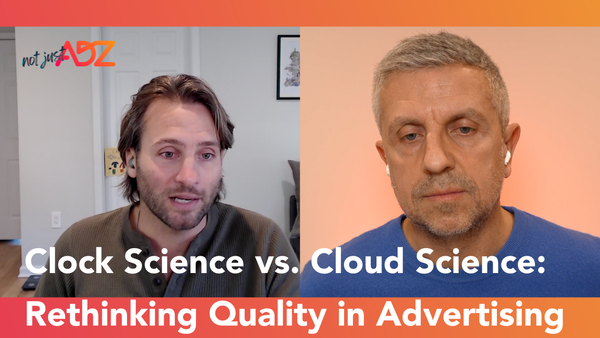Rethinking Sports Through The Lens Of Media, Data And Fans | AdExchanger
Sports federations, leagues, clubs and athletes are fighting for their future. In a matter of weeks live sport evaporated due to COVID-19…

Sports federations, leagues, clubs and athletes are fighting for their future. In a matter of weeks live sport evaporated due to COVID-19, with some events postponed and others officially concluded long before their planned end dates.
In Europe, where the pandemic arrived earlier than the United States, live sports video streaming dropped 91% by the last week of March, according to Conviva.
The absence of live games and active competitions has removed “the product” from sport fans’ lives. However, if from a monetization standpoint sport is a product, for its audiences it is definitely much more than that.
The advantage for the sport industry, compared to other verticals, is a religious-like attachment and passion for the different disciplines, leagues, clubs and athletes that can span the entire length of their fans’ lives.
Unfortunately, the sports industry never fully capitalized on this unique advantage, and sports organizations failed to build success on solid audience and data strategies.
The sports industry instead lived in complacency, fueled by TV rights, sponsorships, ticketing and merchandising, all dependent on the physical existence of competitions or championships, rather than focusing on a crucial pillar: the unrelenting passion of fans (and their spending power). The nearly automatic and almost effortless revenue streams and immense popularity blinded many and prevented them from realizing that for most, the foundations were missing.
Becoming a digital platform
As a result, when the live events all stopped a few weeks ago, the emperor found itself without clothes.
What future changes could mitigate the dependence on live events?
One major shift should be the transition from a passive digital presence to an active one. The current approach is passively built around the live event, game or competition, which attracts an audience depending on interest in the event itself and then releases the audience until the next event. I visualize it as a burning pile of paper, which produces a huge and bright flame but extinguishes itself within a few minutes, if not seconds, after the paper is consumed.
An active approach starts from the fans and exploits the events, one after the other, season after season, to grow the audience and “digitalize” it. It would create fidelity and loyalty and enable a data and content strategy focused on personalization, engagement and monetization.
This approach turns social media to sports organizations’ advantage, where they can promote themselves on social networks while attracting audiences onto their own digital properties. The objective is the creation of an environment where fans can satisfy their attachment to the league, club and athletes and stay as close as possible to them.
It means, effectively, turning the league, club or athlete into a virtual platform of interconnected digital properties with an underlying data collection and activation infrastructure, which grows with time through a virtuous cycle and becomes the core experience for fans and audiences.
It opens the opportunity to own and manage several channels, from esports to media, which are crucial to maintain engagement and communication with audiences, especially when live events are not being held.
More importantly, it becomes the platform onto which sponsorships can be plugged in and activated. So can merchandising strategies, again without depending on the live event, not to mention all the relevant revenue channels surrounding competitions, such as ticketing.
Fading influence
Sponsoring isn’t — or shouldn’t be — just the act of stitching a logo onto a shirt or physical or virtual space. It should be the association between a brand and sport organization, through which the connection with the audience happens. The stronger the bond between the sport organization or athlete and the fans, the higher the emotional value of the sponsorship, peaking during competition but also kept to a high level outside of it.
Sports organizations also have the urgency to reinvent their content strategy and realize their potential for evolving into media owners. They could become a reference for their audiences, rather than representing the weakest link in the discussion and commentary outside the court, often with a marked imbalance of influence between organizations and their players.
The urgent need for a strategic rethinking is underscored by what recently happened with FC Barcelona. Lionel Messi, arguably the world’s best soccer player, set off a bomb by lashing out at the club’s hierarchy on Instagram, leaving the club running for cover and unable to match the visibility and audience of its most representative player.
A few days later, a TV station also accused FC Barcelona’s board of hiring a social media company to create fake accounts and launch a smear campaign against some current and former players to enhance the image of the club’s president. True or not, the damage has been done.
These incidents involving one of the world’s top soccer clubs shows how far sports organizations are from owning their own strong and influential media platforms.
For the same reason, in the last few weeks, nearly all sports media owners have seen their content sources disappear almost completely: No scores, no tables, no games. The lack of differentiation across most sports media outlets is striking.
The news media offers sports organizations and traditional sports media owners a useful lesson in improving their presence. The commoditization of news has pushed the category into a long decline caused by, among other things, the free availability of news. The lack of differentiation, in turn, diminished monetization opportunities. The issue has been partially overcome by publishers moving away from breaking news and creating differentiated and unique content, such as commentary, reports and insights.
The good news is that audiences’ attachment and passion for sports typically lasts not just for the moment but also across fans’ lives.
For sports organizations and sports media owners, it’s time for reflection and seizing the opportunity to reposition themselves more strategically in a world moved by new criteria and dynamics, but still fueled by the same fire burning in fans’ hearts.
Originally published at https://www.adexchanger.com on April 24, 2020.





